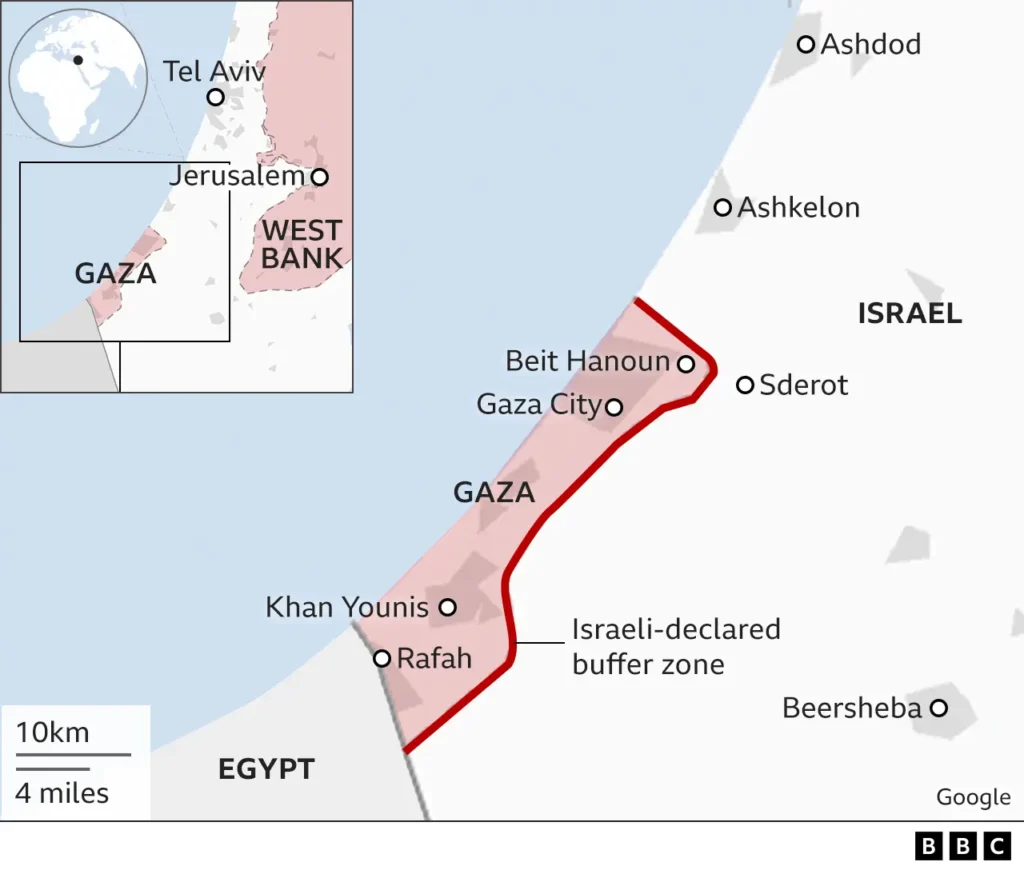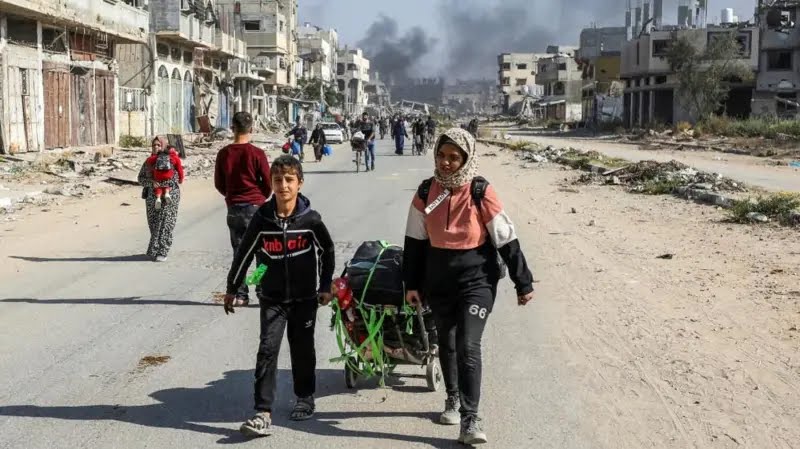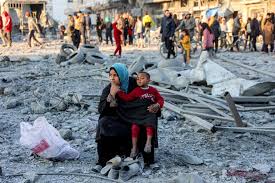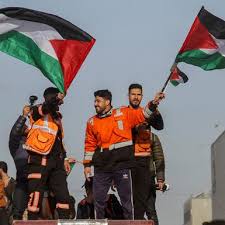Israel-Hamas Ceasefire Effect: What It Means for Gaza

The ongoing conflict between Israel and Hamas in the Gaza Strip has captured international attention for years, but today, a significant development has unfolded as a ceasefire agreement between the two parties has finally taken effect. This ceasefire comes after intense rounds of violence, bloodshed, and destruction that have affected countless civilians. In this blog, we’ll delve into the details of the ceasefire, its significance, and what it means for the future of Gaza, Israel, and the broader Middle East.

The Road to the Ceasefire: A Timeline of the Conflict
The Israel-Hamas conflict has a long and complex history, rooted in religious, political, and territorial disputes that go back over a century. However, the most recent escalation began in October 2024, when Hamas launched a wave of rockets into Israeli territory, leading to Israeli airstrikes on Gaza. This round of violence, which lasted for several weeks, resulted in substantial loss of life, with both Israeli and Palestinian civilians suffering the devastating effects of the conflict.
While Israel has experienced significant damage and casualties—primarily from Hamas rocket attacks—the country has also been under heavy criticism for its military operations in Gaza. Israeli airstrikes have caused substantial damage to Gaza’s infrastructure, including homes, hospitals, schools, and other vital facilities.
The ceasefire gives Israel an opportunity to reassess its security posture and approach toward Gaza, but the country faces ongoing threats from Hamas and other militant groups in the region. The ceasefire is unlikely to address the broader political issues that fuel the conflict, such as the status of Jerusalem, the Gaza blockade, and the two-state solution.
The Role of International Mediation
The ceasefire agreement is largely the result of intense international mediation. Egypt, Qatar, and the United States played a key role in facilitating dialogue between Israel and Hamas. Egypt, in particular, has long been a mediator in the Israeli-Palestinian conflict and has close ties to both the Palestinian factions and Israel. Qatar, a regional power, has also maintained relations with Hamas, allowing it to act as an intermediary.
The international community immediately called for a ceasefire, but efforts to bring about a resolution were hindered by political tensions, with key players such as the United States, Egypt, and Qatar working behind the scenes to mediate between Israel and Hamas. After nearly two months of fierce fighting, diplomatic pressure reached a peak, and on January 18, 2025, a ceasefire agreement was formally reached.

Key Terms of the Ceasefire Agreement
The details of the ceasefire are still being finalized, but early reports indicate that the agreement is based on the following key points:
- Immediate Halt to Hostilities: Both Israel and Hamas have agreed to cease all military operations, including airstrikes and rocket attacks. The ceasefire is intended to create a window for humanitarian aid to reach Gaza and for both sides to de-escalate tensions.
- Humanitarian Aid Access: One of the major provisions of the ceasefire is the agreement to allow humanitarian assistance to flow into Gaza. This includes medical supplies, food, water, and other essential items needed by the population, which has been suffering greatly due to the blockade and the ongoing conflict. While Israel has experienced significant damage and casualties—primarily from Hamas rocket attacks—the country has also been under heavy criticism for its military operations in Gaza.
- Israeli airstrikes have caused substantial damage to Gaza’s infrastructure, including homes, hospitals, schools, and other vital facilities. The ceasefire gives Israel an opportunity to reassess its security posture and approach toward Gaza, but the country faces ongoing threats from Hamas and other militant groups in the region. The ceasefire is unlikely to address the broader political issues that fuel the conflict, such as the status of Jerusalem, the Gaza blockade, and the two-state solution.
Challanges Ahead: Can Peace Last
While the ceasefire brings an end to active fighting, the underlying issues that fuel the Israel-Hamas conflict remain unresolved. These issues include:- The status of Jerusalem, which both Israelis and Palestinians claim as their capital.
Security concerns, with Israel seeking to protect its citizens from rocket attacks and other forms of violence, while Palestinians demand an end to the Israeli blockade of Gaza and the occupation of the West Bank. The division between Palestinian factions, with Hamas controlling Gaza and the Palestinian Authority controlling the West Bank, leading to a lack of unified leadership.
The ceasefire offers hope for immediate relief but does not address the root causes of the violence. It is unclear whether this temporary peace will lead to lasting change or whether the region will once again descend into violence.

Conclusion:
A Fragile Peace in a Volatile Region
The Israel-Hamas ceasefire in Gaza marks a moment of relief after a period of intense violence and suffering. However, as both sides return to their positions, the question remains: will this ceasefire lead to a more lasting peace, or is it simply a temporary pause in a conflict that has raged for decades?
As international observers continue to monitor the situation, the next few weeks will be critical in determining whether the ceasefire holds and whether further steps can be taken to address the long-standing political and territorial issues in the region. For now, the people of Gaza and Israel can only hope that this fragile peace will bring an end to the bloodshed and pave the way for a future where both sides can coexist peacefully.

Syeda Naqvi
Post Comment